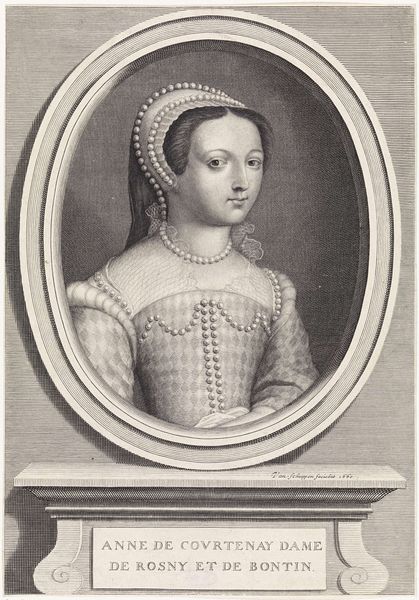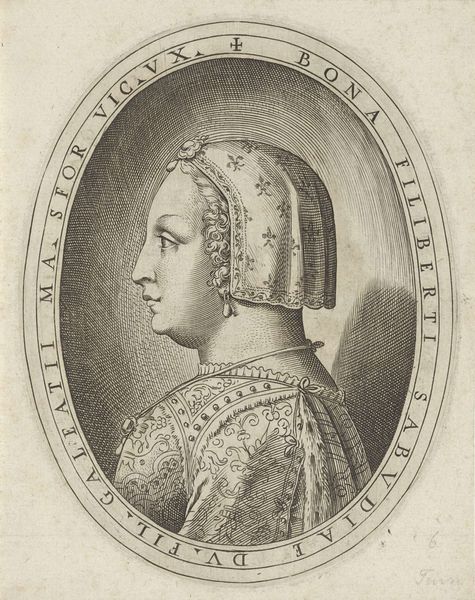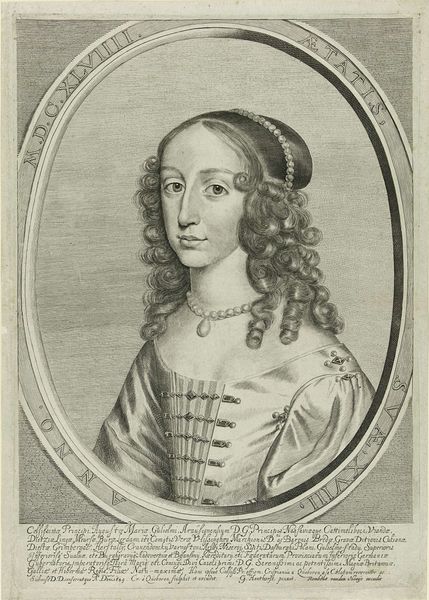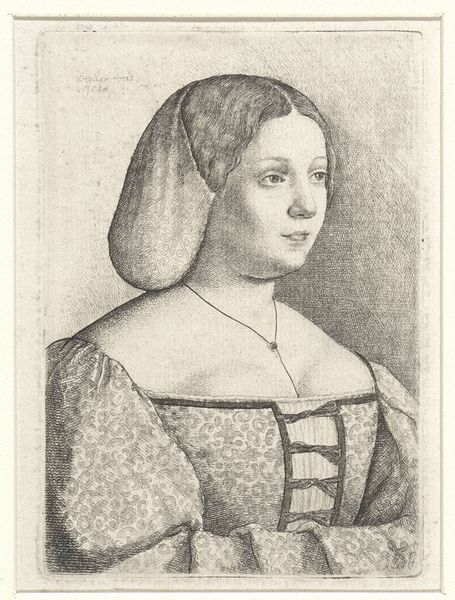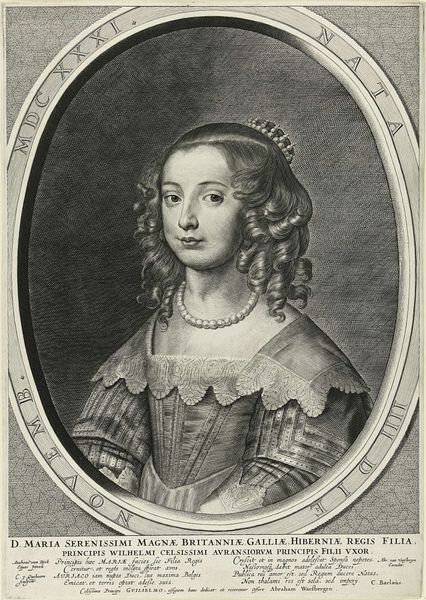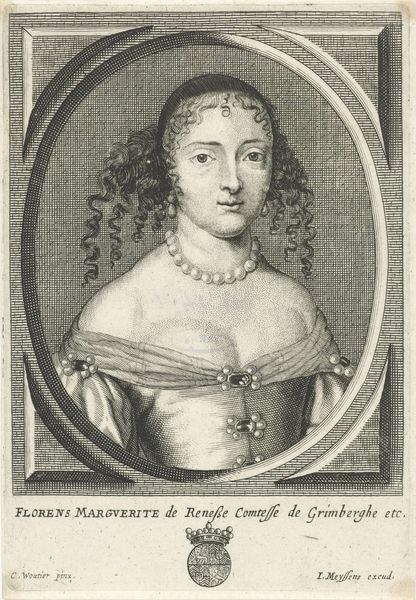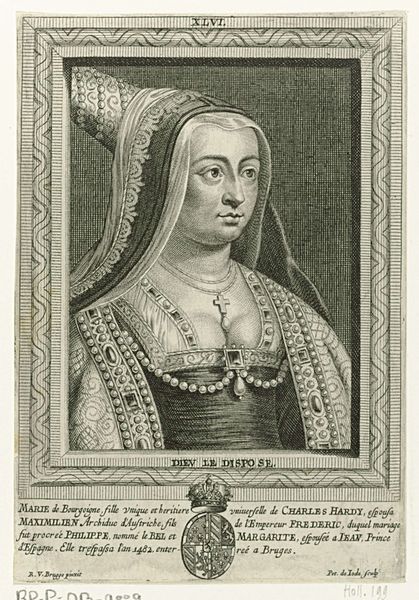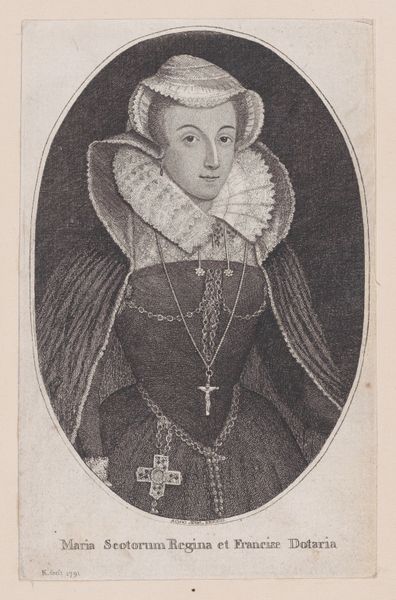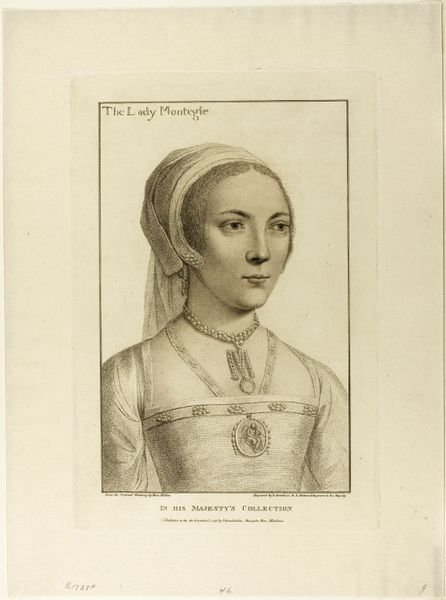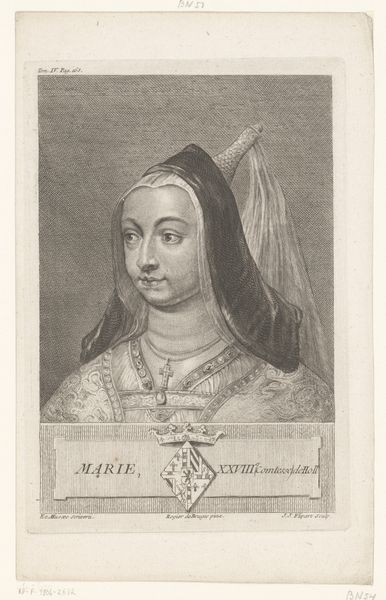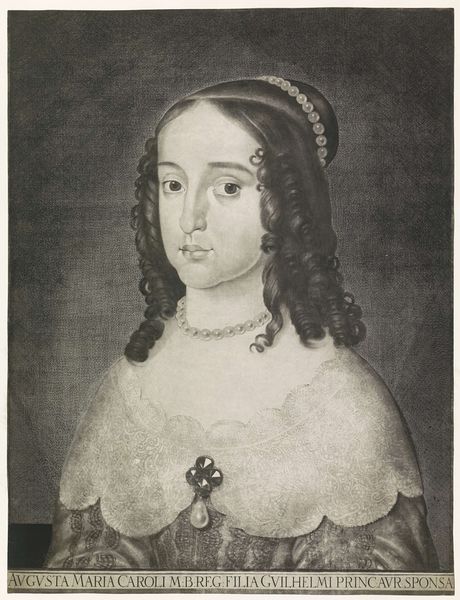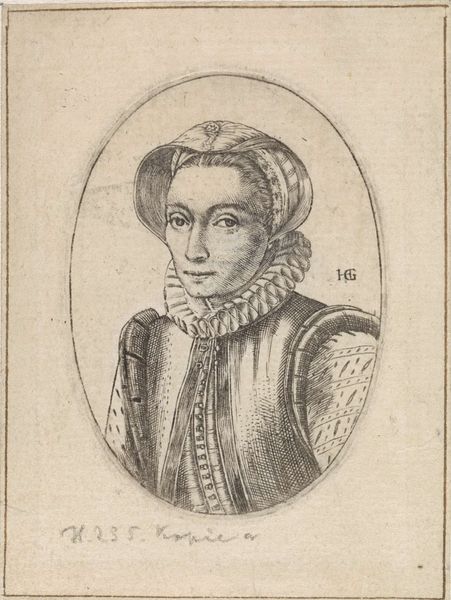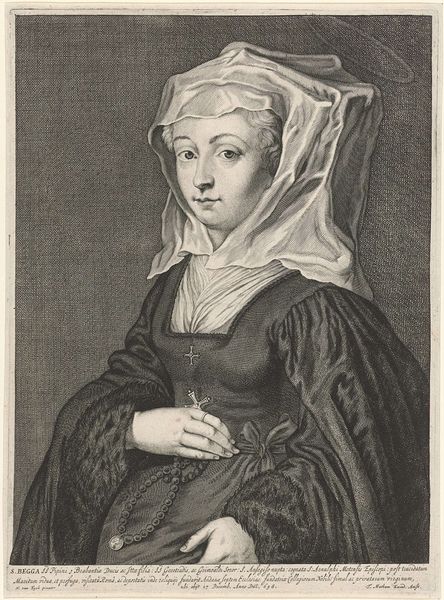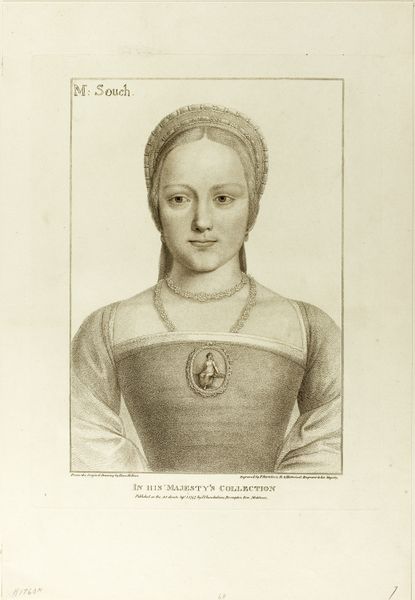
drawing, engraving
#
portrait
#
drawing
#
baroque
#
old engraving style
#
engraving
Dimensions: height 98 mm, width 68 mm
Copyright: Rijks Museum: Open Domain
Editor: Here we have Wenceslaus Hollar's "Portret van een vrouw met Franse kap," made in 1646. It’s an engraving and has a cool, restrained feeling. I’m struck by her gaze and the incredible detail in her clothing. What stands out to you about this piece? Curator: I’m drawn to the ways in which this portrait encapsulates the construction of gender and power within the context of 17th-century European society. Hollar's work invites us to consider the role of adornment—the French cap, the elaborate jewelry, the fur—as markers of status and identity, reflecting the complex interplay between personal expression and societal expectations. How might this portrait, in its careful detailing of attire, be read as an assertion or even negotiation of power within a patriarchal structure? Editor: So, her clothing isn't just fashion, but maybe also making a statement? Curator: Precisely. Consider also the gaze: is it assertive, or is there perhaps a hint of melancholy, reflecting the limited agency afforded to women of that era? And how does Hollar, as a male artist, participate in shaping this representation? These questions open up avenues for exploring the intersections of gender, class, and artistic representation, revealing the portrait not just as an image of a woman, but as a document of its time, fraught with social and political meaning. Editor: I hadn't thought about it that way. It's interesting to consider her agency, or lack thereof, in how she is portrayed. I'm starting to see this piece less as just a historical image and more as a complex commentary on its era. Curator: Absolutely. It’s about disrupting the traditional art historical narrative and injecting it with critical social awareness. Hopefully, you can help other students engage and think more critically about similar works in the future.
Comments
No comments
Be the first to comment and join the conversation on the ultimate creative platform.
